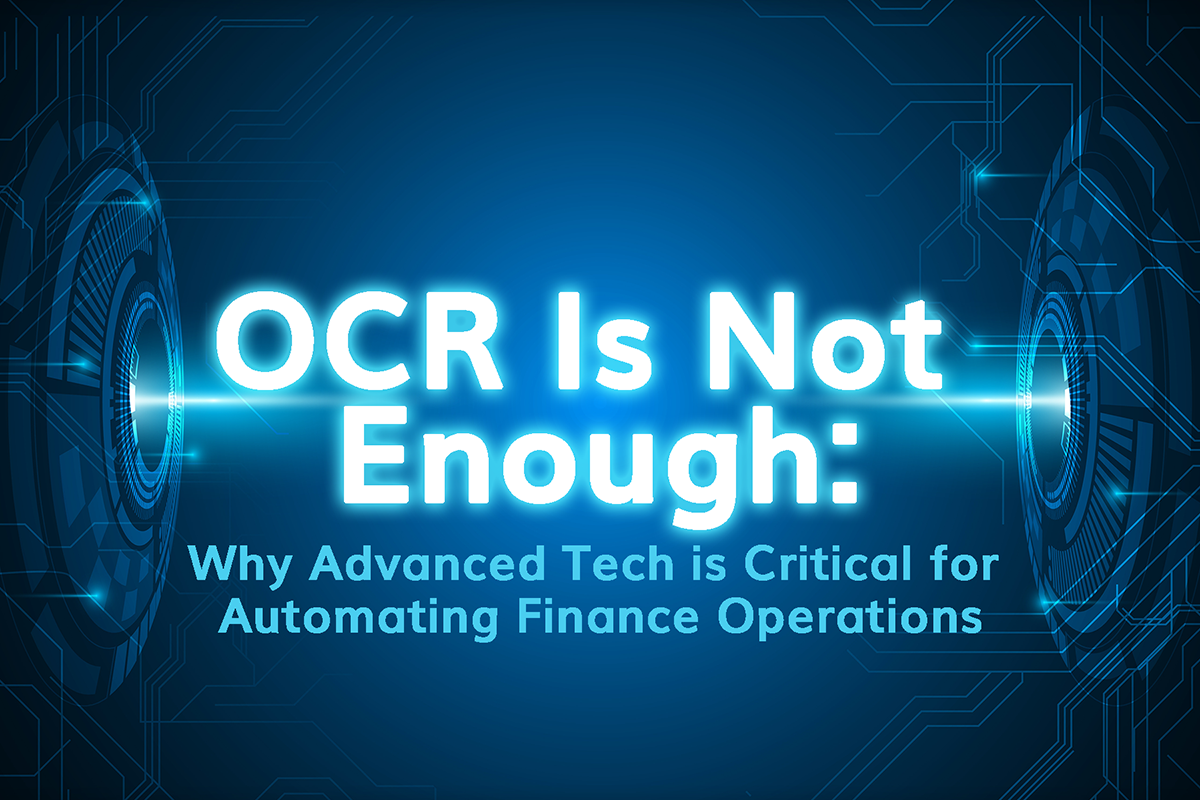Blog | AI In Finance
OCR Is Not Enough: Why Advanced Tech is Critical for Automating Finance
 Finance is complicated.
Finance is complicated.
Add on a layer of risk and compliance to meet requirements and regulations, and it becomes even more complex and highly intricate to execute finance functions properly.
Technical terms and calculations, layered processes, interdisciplinary approaches, interdepartmental collaboration—this type of work requires a person with accounting experience and familiarity with finance vocabulary to be successful.
So how could simple technology such as Optical Character Recognition (OCR) or even more robust solutions such as Robotic Process Automation (RPA) automate the complex workflows and processing that finance requires?
In short, it cannot do it alone.
For automation to help solve complex finance and accounting challenges, it must incorporate the latest technology.
Futuristic terms such as natural language processing and understanding, machine learning, computer vision, and artificial intelligence must be embedded in any solution to correctly and accurately address and resolve some of the more manual, labor- and time-intensive aspects of the finance office and truly relieve pressure and stress for AP, AR, and accounting teams.
Consider this example of OCR and extracting data from an invoice.
When an invoice hits the accounting system and is received by the AP team as an email attachment, the technology must first recognize the document as an invoice. Hundreds, even thousands, of emails might come into the shared inbox. So the first pass of an OCR engine reviews each attachment and gathers enough information to identify the elements that categorize the attachment as an invoice.

The best solutions then take advantage of commercially available engines with good text detection and positional accuracy or engines that are good at reading coordinates and bounding boxes to identify the data items available on the invoice.
Combining all the extracted information provides part of the data needed to process the invoice. But issues differentiating the letter “S” from the number “5” or the letter “l” from the number “1” are still common, and the combination of the letters and numbers is useless without adding some level of meaning and context.
This is the moment where advanced tech, such as cognitive RPA and computer vision, provide the next-level advantages and layer on the ability to identify words and phrases—AND perform a visual search and find items such as logos and letterhead to indicate the company name/organization that is sending the invoice, providing more robust and rich meaning, and useful information.
The most advanced tech solutions add the ability to process the data AFTER it has been extracted.

To correctly perform the extraction, technology needs to recognize the different elements—the receiver, the vendor/customer, dates, amounts, discounts, disputes, reason codes, addresses, phone numbers, and websites—the many elements that could make up an invoice. It has to take advantage of all the information available to reconcile and match the invoice to the entities involved: the buyer and the seller, the vendor, and the receiving entities.
Computer vision and NLP/NLU contribute to the downstream, post processes by mapping accounting codes and writing to the connected systems of record or ERPs in the appropriate format to be ingested and updated in the appropriate fields. Humans may do this implicitly, but a computer workflow needs cognitive algorithms and advanced technology to match this type of processing correctly.
Consider this: in accounting work, a finance person visually scans the numbers on the invoice.
- Does it make sense at a high level?
- Do these numbers on a quick pass seem right?
To imitate a finance practitioner, an automated solution needs to extract relevant accounting data, validate numbers, check that the math is correct, check that the taxes are correct, and apply the internal accounting codes.
Only the latest technology, purpose-built for the finance function, could mimic and ultimately execute the complexities in the accounting department with speed and accuracy.
Yes, finance is complicated, but it also has a process that could be mimicked through advanced technologies such as OCR combined with computer vision and artificial intelligence.
Advanced technology mitigates risk, improves compliance, and deftly handles complex and highly intricate finance functions. Versed in technical terms and calculations, today’s automated solutions enhance interdepartmental collaboration and ultimately strengthen business resiliency.
